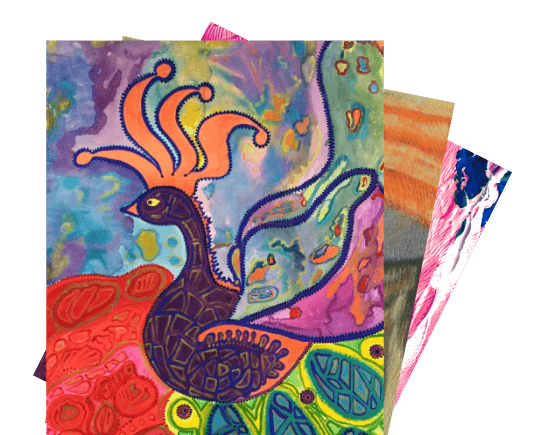Filters
Available Artwork
Other styles of paintings you may like
Origins of Colors Painting:
One of the earliest records of the colour palette was discovered 40,000 years ago with the invention of the first pigments, which involved combining soil, animal dung, burnt charcoal, and chalk. And these produced the colours: red, yellow, brown, black and white. The history of colour has been one of perpetual discovery, whether through exploration or scientific advancement. The invention of new pigments also influenced the development of iconic art movements, such as the Renaissance and Impressionism, among others.
Some of the earliest recorded uses of colour date back to prehistoric times. In the caves of Lascaux, France, Paleolithic humans used charcoal, red ochre, and yellow ochre to create paintings over 17,000 years ago. These natural pigments were ground from rocks and soils, mixed with animal fat or water, and applied to stone walls using brushes made from sticks or even blown through hollow bones.
The earliest synthetic blue pigment, known as Egyptian blue, was invented in ancient Egypt around 2200 BCE, approximately the same time the Great Pyramids were constructed. Made from silica (sand), lime, copper compounds, and alkali, it was fired to produce a durable calcium copper silicate pigment. Egyptians used it in tombs, statues, and ceramics to symbolise the heavens and fertility.
Ancient Greek, Roman and neighbouring civilisations used a range of plant and animal dyes to create coloured textiles. Plant dyes included crocus sativus (ochres), madder, woad, weld (yellow), walnut hulls, oak gall (brown and black), orchil lichen (pink/purple), alchanet (red), and saffron crocus (yellow).
Animal dyes included kermes beetles (red/cochineal) and seashell creatures such as Hexaplex trunculus, Bolinus brandaris, and Stramonita haemastoma, which created a purple dye similar to the one used by the Phoenicians and Romans to produce Tyrian purple.
During the Renaissance, colour theory evolved alongside painting techniques. Artists like Leonardo da Vinci and Johannes Vermeer not only used natural pigments but began experimenting with how light and shade affected the perception of colour. The scientific understanding of colour was further advanced by Sir Isaac Newton in the 17th century when he discovered the visible spectrum by passing light through a prism.
In the 19th and 20th centuries, industrial chemistry revolutionised colour production. Synthetic dyes replaced many natural sources, making colour more accessible to artists, designers, and industries worldwide.
Today, colour continues to shape how we communicate and interpret the world around us — from fashion and branding to mood and emotion. What began with crushed earth and plants has become a global language of expression.









